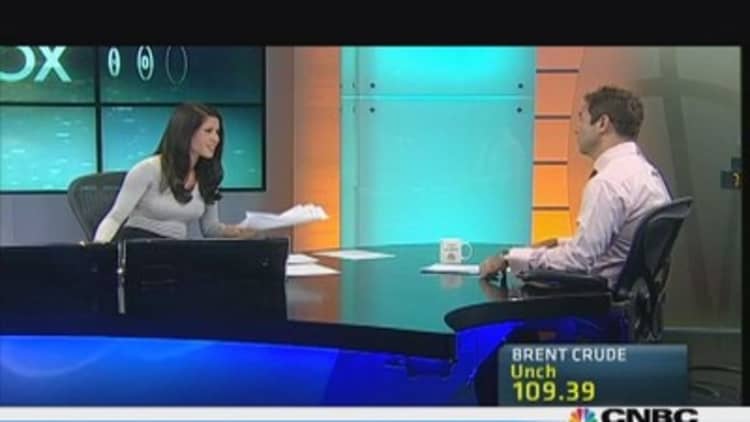The use of the yuan in cross-border trade settlements is set to grow by 50 percent to 6 trillion yuan ($988 billion) in 2014, according to Deutsche Bank, reflecting the swift adoption of the currency in trade finance.
This amounts to approximately 20 percent of China's global trade volume, compared with an estimated 17 percent in 2013, the bank said. During January-October this year, the volume of yuan trade settlements totaled 3.55 trillion yuan.
The Chinese currency has been gaining traction in cross border trade in the recent years, as multinational companies seek to manage foreign exchange risk, lower transaction costs and process payments quicker.
In October, the yuan surpassed the euro as the second most used currency in international trade finance, according to data from the Society for Worldwide Interbank Financial Telecommunication (SWIFT).
(Read more: Yuan now one of world's most tradable currencies)
The share of the yuan's usage in trade finance, such as Letters of Credit and Collections, grew to 8.7 percent in October, from 1.9 percent in January 2012, data from the transaction services organization showed.
It now ranks behind the U.S. dollar, which remains the leading currency with a share of 81.1 percent. The euro's share, meanwhile, dropped to 6.6 percent in October, from 7.9 in January 2012, and is now in third place.
The establishment of clearing banks in Taiwan and Singapore has facilitated the recent growth in settlement volume, in addition to the strength of the yuan against the greenback this year, the bank said.

After rising 2.6 percent against the U.S. dollar this year, the bank expects the currency will remain on an appreciation path next year, strengthening by roughly 2-3 percent.
"Although China is moving towards reforming its financial system (further opening up its capital account), we believe the RMB [renminbi] will achieve basic convertibility around 2017, implying that dominant corporate flows will remain the key driver for currency for the time being," the bank said.
(Read more: Yuan as global currency? Many firms don't see benefits)
Another positive force for the currency will be a pickup in the country's exports as global demand accelerates, it added.
As yuan-denominated business expands globally, the bank forecasts the currency's daily trading volume will rise to $4-4.5 billion in spot and $7-7.5 billion in FX swaps and forwards in 2014, after almost doubling in 2013.
"The growth spurt in the RMB market in 2013, driven by policymakers' intensified efforts to relax the capital account and expand use of the currency in other regional centers will position the yuan well for continued development next year," Linan Liu, Greater China rates strategist at Deutsche Bank wrote in a note.
(Read more: Yuan moves one step closer to global currency status)
"2014 will be a year characterized by transition to a new market development stage underpinned by significant market expansion, rapid product innovation, increased market liquidity, and more efficient pricing discovery for all offshore RMB products," she added.
—By CNBC's Ansuya Harjani; Follow her on Twitter: @Ansuya_H


